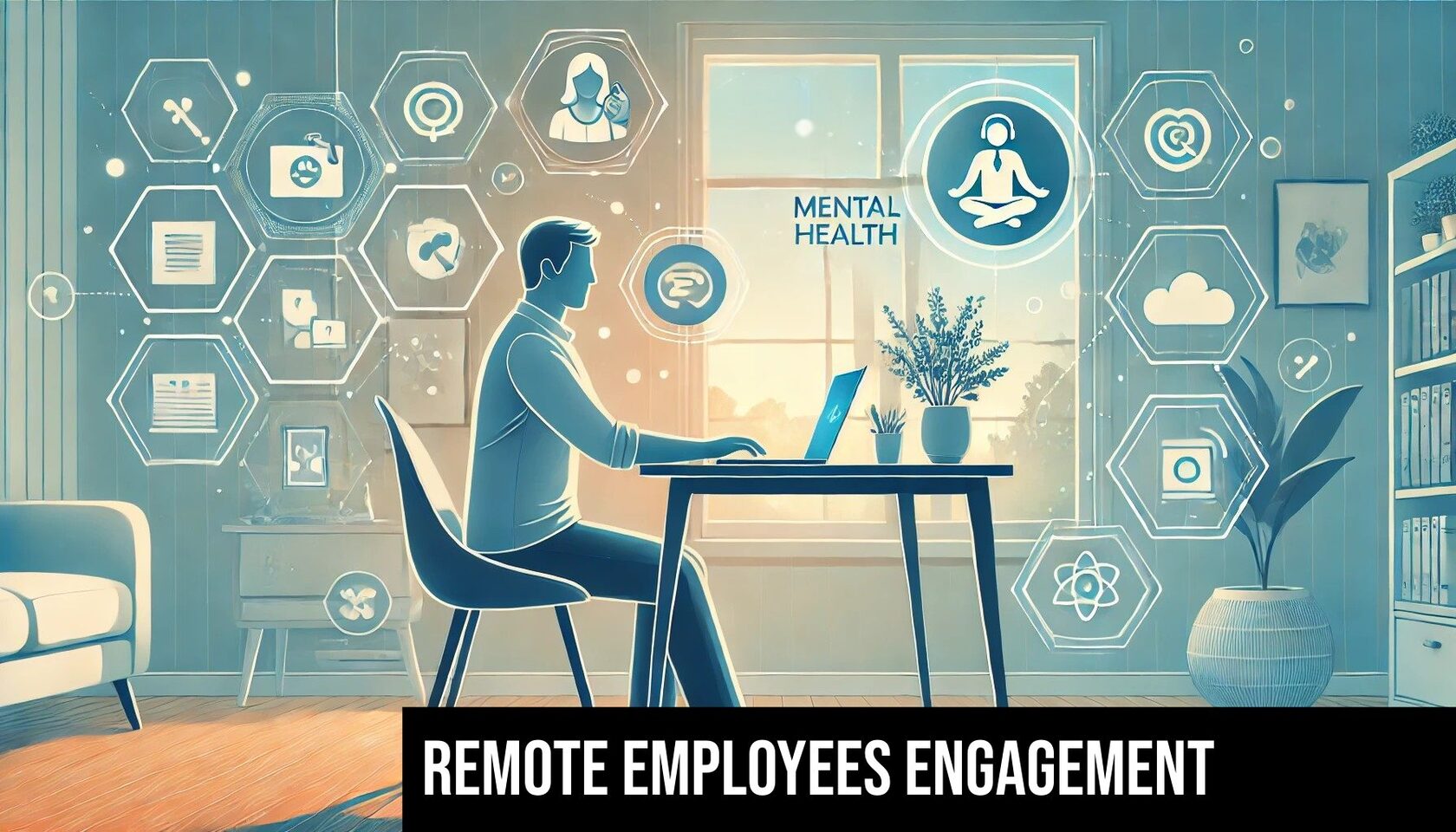How to Develop and Implement Employee Engagement Strategies in Remote Environment?
Implementing employee engagement strategies in a remote working environment requires unique considerations and adjustments. The challenge lies in fostering a sense of connection, motivation, and well-being among employees who are geographically dispersed.
Read our article about Why is Employee Engagement Crucial for Companies?
Here are some strategies tailored to remote work environments:
Read our article about Why is Employee Engagement Crucial for Companies?
Here are some strategies tailored to remote work environments:
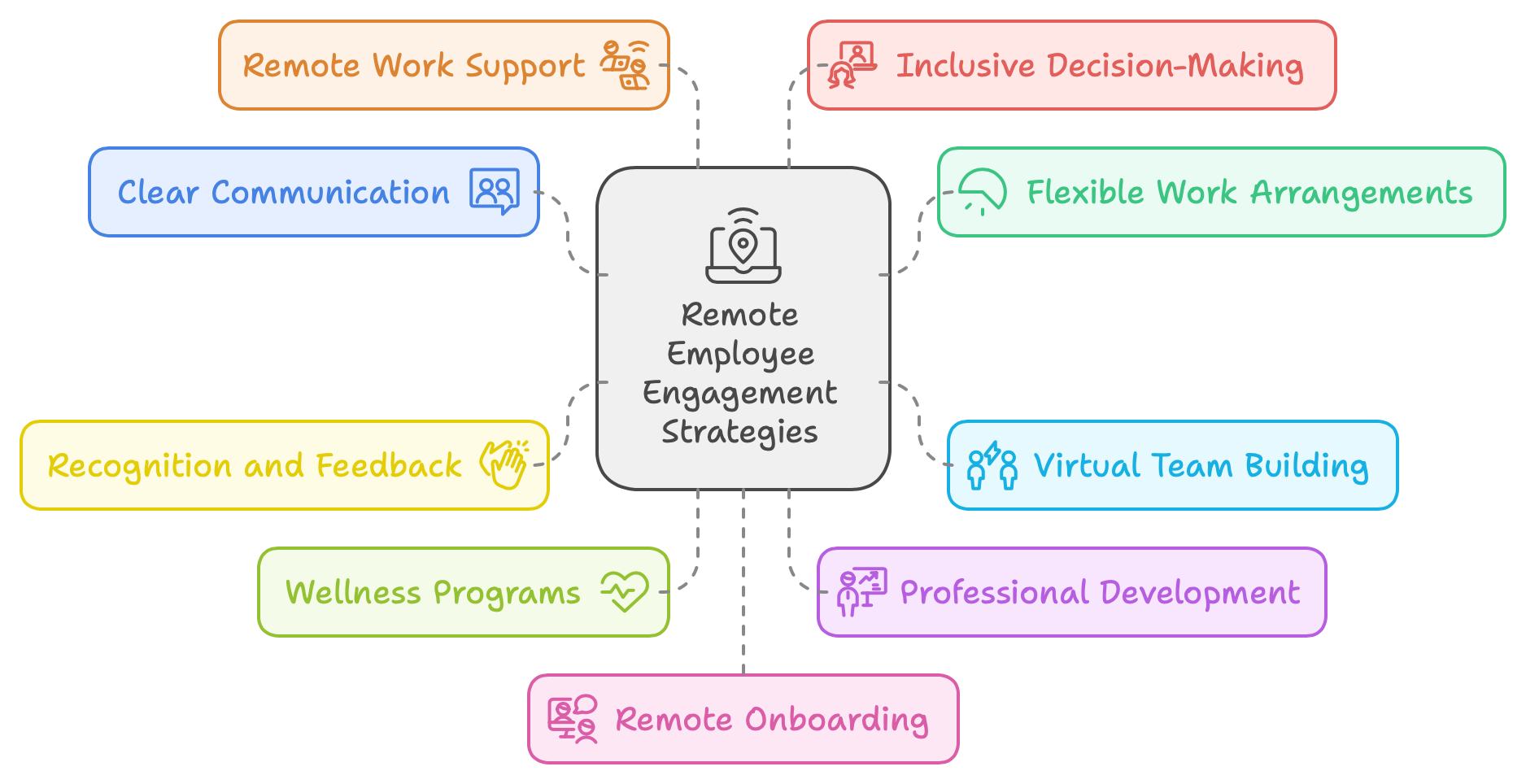
Building Engagement Through Communication and Flexibility
Clear Communication:
- Prioritize clear and frequent communication through digital channels. Use video conferences, messaging apps, and project management tools to keep teams connected.
- Encourage regular check-ins between managers and team members to discuss goals, progress, and challenges.
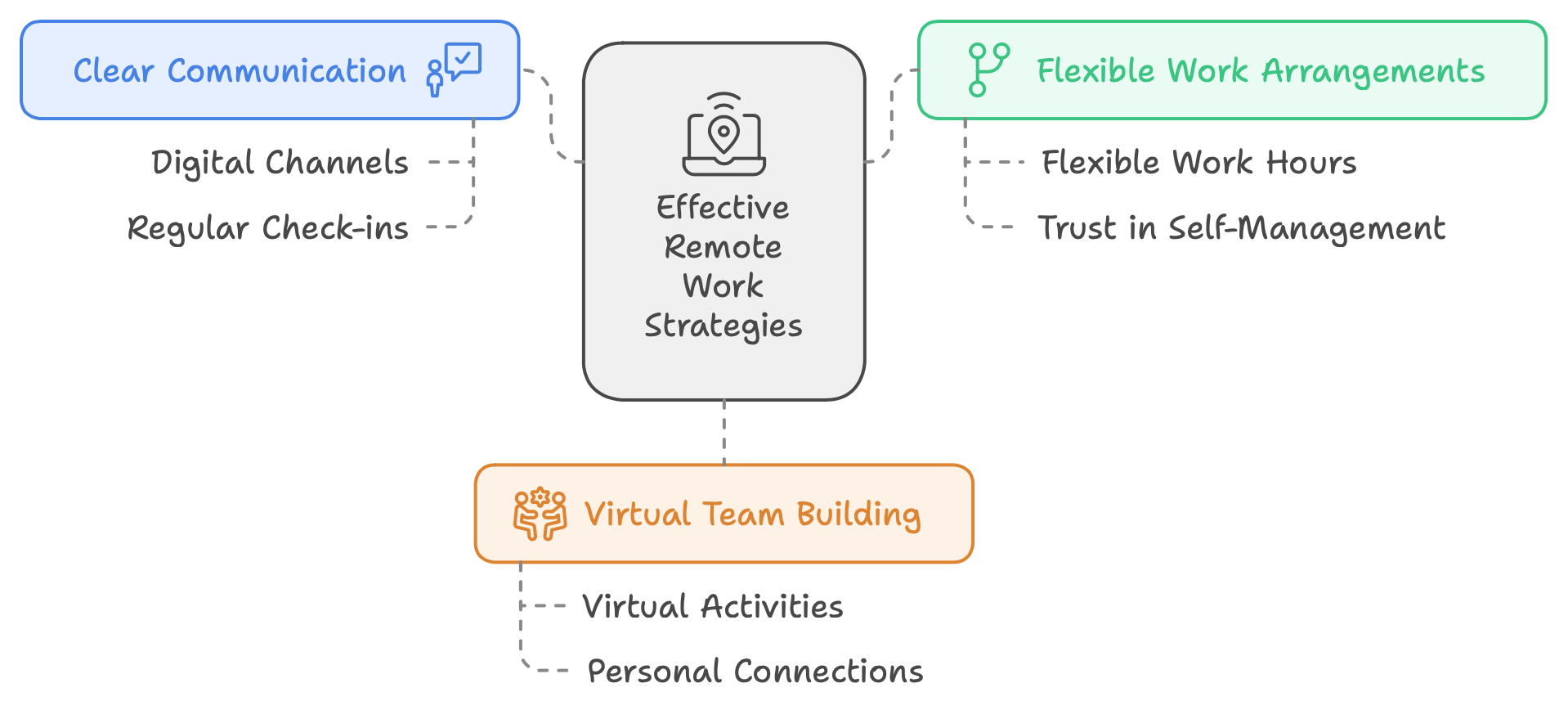
Flexible Work Arrangements:
- Embrace flexibility in work hours to accommodate different time zones and personal needs. Trust employees to manage their own schedules, provided they meet their objectives.
- Organize virtual team-building activities and social events to foster a sense of belonging. This could include virtual happy hours, online games, or team challenges.
- Create opportunities for employees to get to know each other on a personal level.
Recognition, Wellness, and Professional Development
Recognition and Feedback:
Wellness Programs:
Professional Development:
- Maintain a strong culture of recognition and feedback. Celebrate achievements publicly, acknowledge exceptional work, and provide constructive feedback.
- Use digital badges, awards, or virtual shout-outs to appreciate employees' efforts.
Wellness Programs:
- Promote employee well-being with virtual wellness programs, such as online yoga classes, mindfulness sessions, or mental health resources.
- Encourage employees to take breaks, manage stress, and maintain a healthy work-life balance.
Professional Development:
- Offer online training and development opportunities to support career growth.
- Provide resources and access to e-learning platforms for skill enhancement.
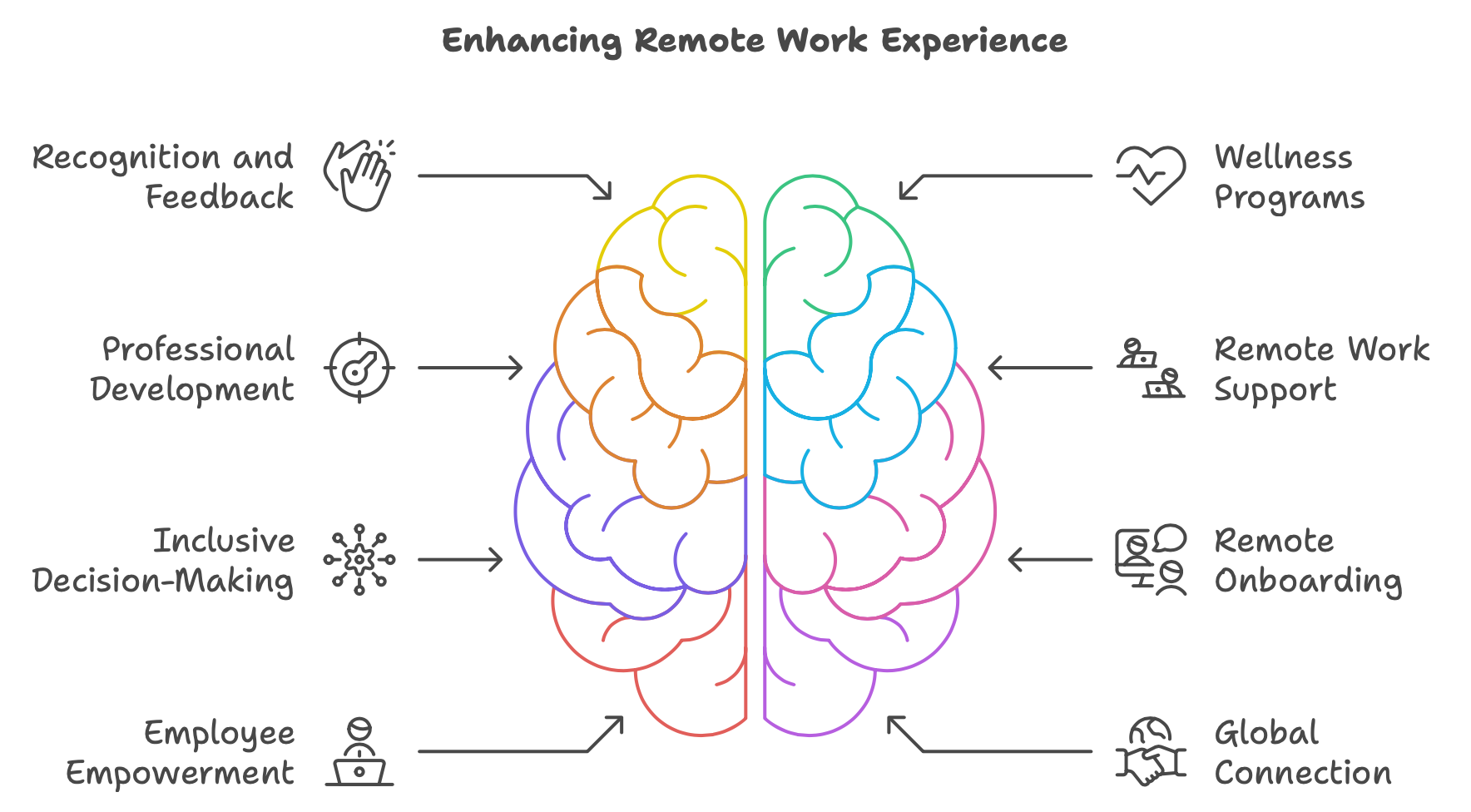
Remote Work Support:
- Equip remote workers with the necessary technology, tools, and ergonomic advice to create a comfortable and productive workspace at home.
- Address any technical issues promptly to minimize disruptions.
Inclusive Decision-Making:
- Include remote employees in decision-making processes through virtual meetings and collaborative tools.
- Seek their input on company strategies, projects, and initiatives.
Remote Onboarding:
- Develop a comprehensive remote onboarding process for new hires. Provide them with the tools and information they need to integrate into the organization effectively.
Employee Empowerment:
- Empower remote employees to take ownership of their work. Encourage autonomy, trust, and accountability.
- Use digital project management and collaboration tools to facilitate remote teamwork.
Global Connection:
- Leverage the diversity of a remote workforce by creating opportunities for cross-cultural collaboration and learning.
- Celebrate cultural differences and promote a global perspective.
Regular Surveys and Feedback:
- Use online surveys and feedback mechanisms to assess remote employee engagement and satisfaction.
- Act on the feedback received to make improvements.
Leadership Visibility:
- Ensure that leadership maintains a visible presence in the virtual workplace. Encourage leaders to participate in virtual meetings, town halls, and discussions.
Virtual Company Events:
- Host virtual company-wide events and town halls to share updates, company news, and celebrate milestones.
- Provide opportunities for employees to ask questions and interact with leadership.
Empowering and Supporting Remote Teams
Technology for Connection:
Cybersecurity and Data Protection:
- Invest in technology that supports remote team collaboration, such as video conferencing, project management, and communication tools.
Cybersecurity and Data Protection:
- Ensure that remote employees are educated about cybersecurity best practices and adhere to data protection policies.
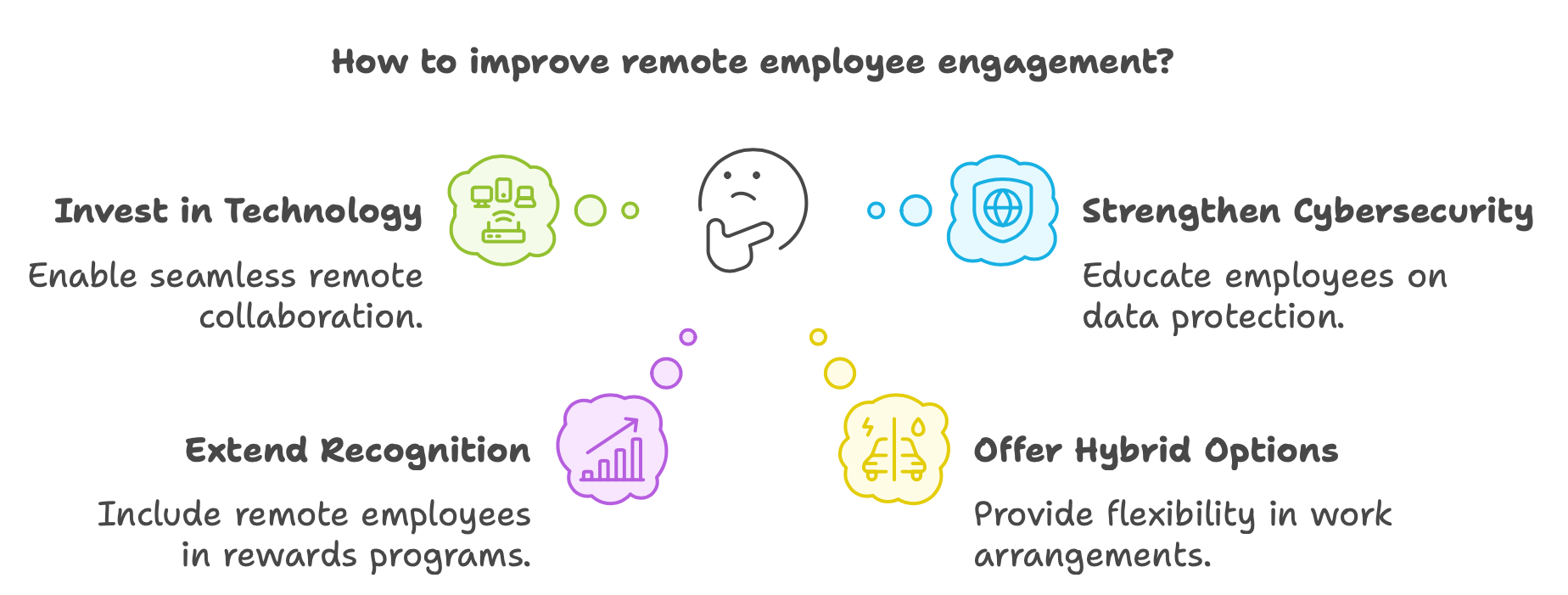
Recognition Across Borders:
- Ensure that recognition and rewards programs extend to remote employees, even if they work in different countries.
Hybrid Work Options:
- Consider offering hybrid work options where employees can choose to work remotely, in the office, or a combination of both, allowing them flexibility.
Implementing remote employee engagement strategies requires a shift in mindset and the utilization of digital tools to build a strong and connected remote workforce. Regularly assess the effectiveness of these strategies and adapt them as necessary to create a positive and engaged remote work environment.
UnitiQ: Elevating Remote Employee Engagement
UnitiQ specializes in helping businesses create meaningful engagement strategies for remote teams. We offer customized HR solutions, from clear communication frameworks and virtual team-building activities to wellness programs that keep remote employees connected and motivated.
With a focus on professional growth and empowering teams, UnitiQ provides the tools and guidance needed to build a productive, thriving remote workforce.
Their approach ensures companies can maintain employee well-being, recognition, and inclusivity across all digital workspaces.
We will be happy to help you with Talent Acquisition and HR tasks, please contact me, Olga Fedoseeva, Fonder at UnitiQ, directly:
My Telegram
My LinkedIn
With a focus on professional growth and empowering teams, UnitiQ provides the tools and guidance needed to build a productive, thriving remote workforce.
Their approach ensures companies can maintain employee well-being, recognition, and inclusivity across all digital workspaces.
We will be happy to help you with Talent Acquisition and HR tasks, please contact me, Olga Fedoseeva, Fonder at UnitiQ, directly:
My Telegram
My LinkedIn
